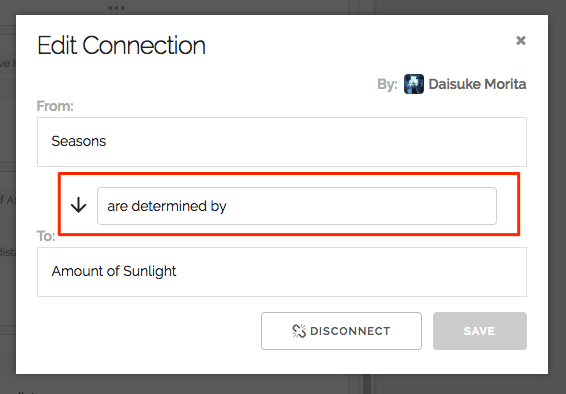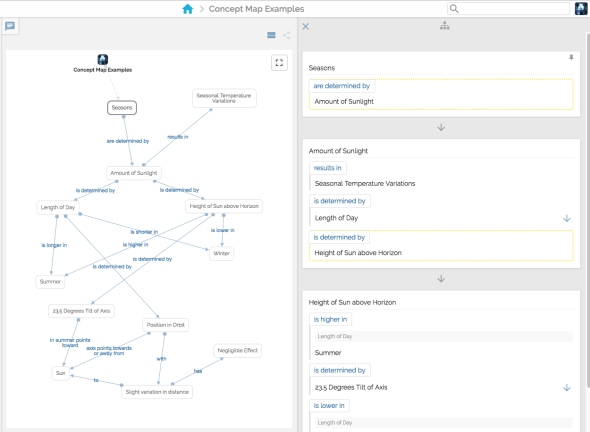Why it’s harder to discover valuable knowledge in tree-structured note-taking
Posted: March 6, 2019 Filed under: uncategorized Leave a commentRecently, Cotoami project, the successor of Piggydb, released a new feature called “Linking Phrases”.
As you can see in the screenshot below, it allows annotating a connection when you feel a need for some explanation of it.
I thought about this enhancement when I was working on Piggydb some years ago but suspected it would just complicate things without adding much value. Piggydb aimed at becoming a simple note-taking tool, not a modeling tool. After all, you can express a labeled relationship by adding a node between the two.
However, I came up with an idea of “Horizontal and Vertical Relationships” recently and thought it would become one of the significant features in Cotoami.
The term “Linking Phrases” is borrowed from Concept Maps, which I mentioned in the article Wiki, Mind maps, Concept maps, and Piggydb before.
When I first saw concept maps, I thought that is where Piggydb’s knowledge creation process should lead.
Since it focused on the structure or knowledge-creation-process side of Concept Maps, Piggydb hasn’t had an update to support writing Concept Maps so far, but now, Cotoami supports it as a result of this enhancement.
The above concept map explains why we have seasons (the original concept map is presented in the article at Concept Maps official website: http://cmap.ihmc.us/docs/theory-of-concept-maps). If you are interested in how this concept map was created with Cotoami, here is a youtube video to demonstrate the process:
Concept mapping is an excellent way to demonstrate this feature, but a significant difference is that Cotoami’s linking phrases are optional. That means you should avoid annotating connections unless the relationships are obscure to you. Those unclear relationships are possibly valuable knowledge for you (since you didn’t know them well before), and should be highlighted in your knowledge-base. I call them Horizontal Relationships.
On the other hand, Vertical Relationships generally means inclusive or deductive relationships like “has”, “results in”, or “is determined by” appeared in the concept map example above. Most connections would fall into this category. Simple arrow lines would be enough to express these relationships, and you wouldn’t feel the need for annotations in most cases.
Whether a connection is horizontal or vertical depends on you or your group. For example, if you are a table tennis fan, the connection below should be obvious:
[Table tennis] ----> [Jan-Ove Waldner]
But if you are not, there’s a need for some explanation:
[Table tennis] --(legendary player)--> [Jan-Ove Waldner]
In the process of Cotoami’s knowledge creation, horizontal relationships would be a small portion of all connections but represent some important discoveries in your knowledge-base. That’s why I introduced this enhancement. Annotating only horizontal relationships won’t complicate things.
This idea also leads to the insight described by the title of this article. It would be difficult to deal with both horizontal and vertical relationships at the same time in tree structures which mainly deal with the latter.
With this update, Cotonomas (Cotonomatizing), which I explained in the previous entry, and Linking Phrases are the most two essential features so far in Cotoami. Both are for highlighting your discoveries.
If you are interested in Cotoami’s way of note-taking, check out the project website on GitHub (https://github.com/cotoami/cotoami). It would be fairly easy to try it out on your PC.
The project is also waiting for your support by becoming a patron at https://www.patreon.com/cotoami. In return, you’ll get an account of the fully-managed official Cotoami server.




Recent Comments